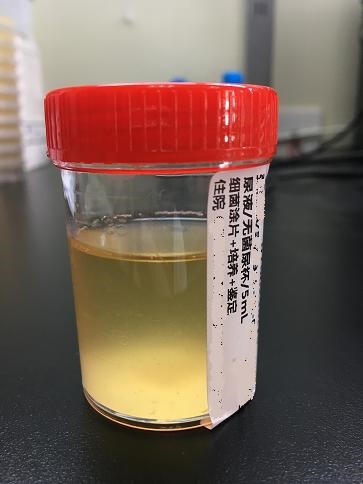
关于女性患者尿培养很多指南推荐留取前用肥皂水清洗外阴后采取清洁中段尿用于尿液培养,但是对于门诊患者很多无法清洗,这类患者常自行留取中段尿。那清洗外阴的尿培养的污染率和结果准确性与不经过清洗的尿培养的污染率和结果准确性有无差异呢?我们查阅文献meta分析结果报告如下:

尿路感染(urinary tract infections,UTIs)是病原微生物引起肾脏、输尿管、膀胱和尿道等泌尿系统各个部位感染的总称。尿路感染是常见的感染性疾病,女性比男性更容易发生尿路感染,将近一半的女性一生至少发生一次尿路感染[1]。尿路感染根据感染发生部位可分为上尿路感染和下尿路感染。根据有无基础疾病、尿路解剖和功能异常,可分为单纯性尿路感染和复杂性尿路感染。根据有无临床症状分为有症状尿路感染和无症状尿路感染。尿培养在尿路感染的诊断中具有重要意义,可采集中段尿、导尿、膀胱穿刺尿及肾盂尿等标本进行培养。以晨起第一次清洁中段尿最佳,女性患者建议留取前用肥皂水清洗外阴,留取时应将阴唇分开。那么是否清洁外阴对尿培养结果有无影响?Mark T等[2]就女性患者尿标本采集方法对尿培养结果的影响进行Meta分析(文献发表时间为1965年至2014年),分析结果如下:
(一)女性患者是否清洁外阴对标本污染率的影响:
五篇研究[3-7]比较了采集中段尿标本前是否清洁外阴对污染率的影响。对这五项研究进行Mantel-Haenszel统计分析,结果显示:是否清洁外阴对污染率的影响无统计学差异(见FIG 1)。但五项研究对于标本污染的判定标准各不相同,对统计结果会产生影响。

图 1清洁中段尿(MSCC)与直接中段尿(MS)对女性UTIs患者尿培养污染率差异的分析
(二)女性患者是否清洁外阴对UTIs诊断准确性的影响
三篇研究[8-10]比较了是否清洁外阴对UTIs诊断准确性的影响(以直接插管采集尿标本作为参考标准)。结果显示:中段尿培养(包括清洁中段尿和直接中段尿标本)诊断UTIs的敏感性为:98%-100%,特异性为:95%-100%(见Table1)。Meta分析结果显示清洁中段尿和直接中段尿诊断UTIs的准确性相似,但是三项研究在入选人群及阳性阈值存在差异,整体可信性较低。
表 1清洁中段尿(MSCC)与直接中段尿(MS)诊断女性UTIs灵敏度和特异性文献汇总
|
文献 |
人群分组 |
阳性阈值(CFU/ml) |
灵敏度% (95% 可信区间) |
特异度% (95% 可信区间) |
|
Walter and Knopp[8] |
无 |
>104 |
98(88-100) |
97(89-99) |
|
Lemieux and St.-Martin [9] |
健康志愿者 |
>104 |
100(87-100) |
100(89-100) |
|
无症状UTIs |
>104 |
无 |
100(88-100) |
|
|
有症状UTIs |
>104 |
100(44-100) |
95(88-98) |
|
|
Immergut et al. [10] |
无 |
5×104 |
100(44-100) |
95(88-98) |
以上关于女性患者尿标本采集对培养结果的影响文献时间较早,需要进一步补充最新的高质量研究,才能作出更合理评价。女性UTIs患者尿标本采集推荐清洁中段,但对于留取清洁中段尿困难且需要进行尿培养明确是否存在尿路感染的患者,直接中段尿亦可用于培养。
实验室人员应更多地与临床医护人员沟通交流,在国内外指南的基础上,制定切合医院实际的标本采集指南。
参考文献:
[1] Foxman B, Barlow R, Gillespie B, et al. Urinary tract infection: self-reported incidence and associated costs [J]. Annals of Epidemiology, 2000, 10(8):509–515.
DOI:http://dx.doi.org/10.1016/S1047-2797(00)00072-7
[2] Mark T. LaRocco, Jacob Franek. Effectiveness of Preanalytic Practices on Contamination and Diagnostic Accuracy of Urine Cultures: a Laboratory Medicine Best Practices Systematic Review and Meta-analysis. Clinical Microbiology Reviews.2016; 29(1):105-147.DOI:10.1128/CMR.00030-15.
[3]Blake DR, Doherty LF. Effect of perineal cleansing on contamination rate of mid-stream urine culture. J PediatrAdolesc Gynecol. 2006;19(1):31–34.
DOI: http://dx.doi.org/10.1016/j.jpag.2005.11.003
[4] Bradbury SM. Collection of urine specimens in general practice: to clean or not to clean? J R Coll Gen Pract.1988;38(313):363–365.
[5]Holliday G, Strike PW, Masterton RG. Perineal cleansing and midstream urine specimens in ambulatory women. J Hosp Infect. 1991;18(1):71–75.
[6]SchlagerTA, Smith DE, Donowitz LG. Perineal cleansing does not reduce contamination of urine samples from pregnant adolescents. Pediatr Infect Dis J.1995;14(10):909 –911. DOI: http://dx.doi.org/10.1016/0195-6701(91)90096-Q.
[7]Schneeberger C, van den Heuval ER, Erwich JJ, Stolk RP, VisserCE, Geerlings SE. Contamination rates of three urine sampling methods to assess bacteriuria in pregnant women. Obstet Gynecol.2013;121 (2Pt1):299–305. DOI: http://10.1097/AOG.0b013e31827e8cfe.
[8]Walter FG, KnoppRK. Urine sampling in ambulatory women: midstream clean-catch versus catheterization. Ann Emerg Med. 1989;18(2):166 –172. DOI: http://dx.doi.org/10.1016/S0196-0644(89)80108-8
[9] Lemieux G, St-Martin M. 1968. Reliability of clean-voided mid-stream urine specimens for the diagnosis of significant bacteriuria in the female patient. Can Med Assoc J.1968;98(5):241–245.
[10]Immergut MA, Gilbert EC, Frensilli FJ, Goble M. The myth of the clean catch urine specimen. Urology.1981;17(4):339–340. DOI:10.1016/0090-4295(81)90259-4